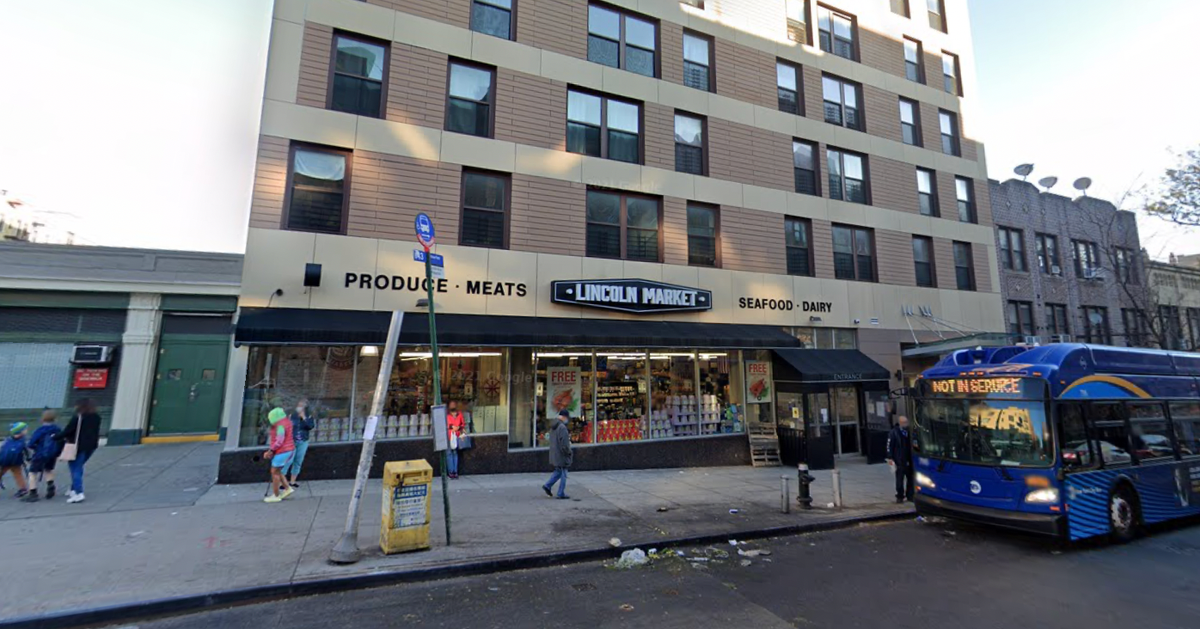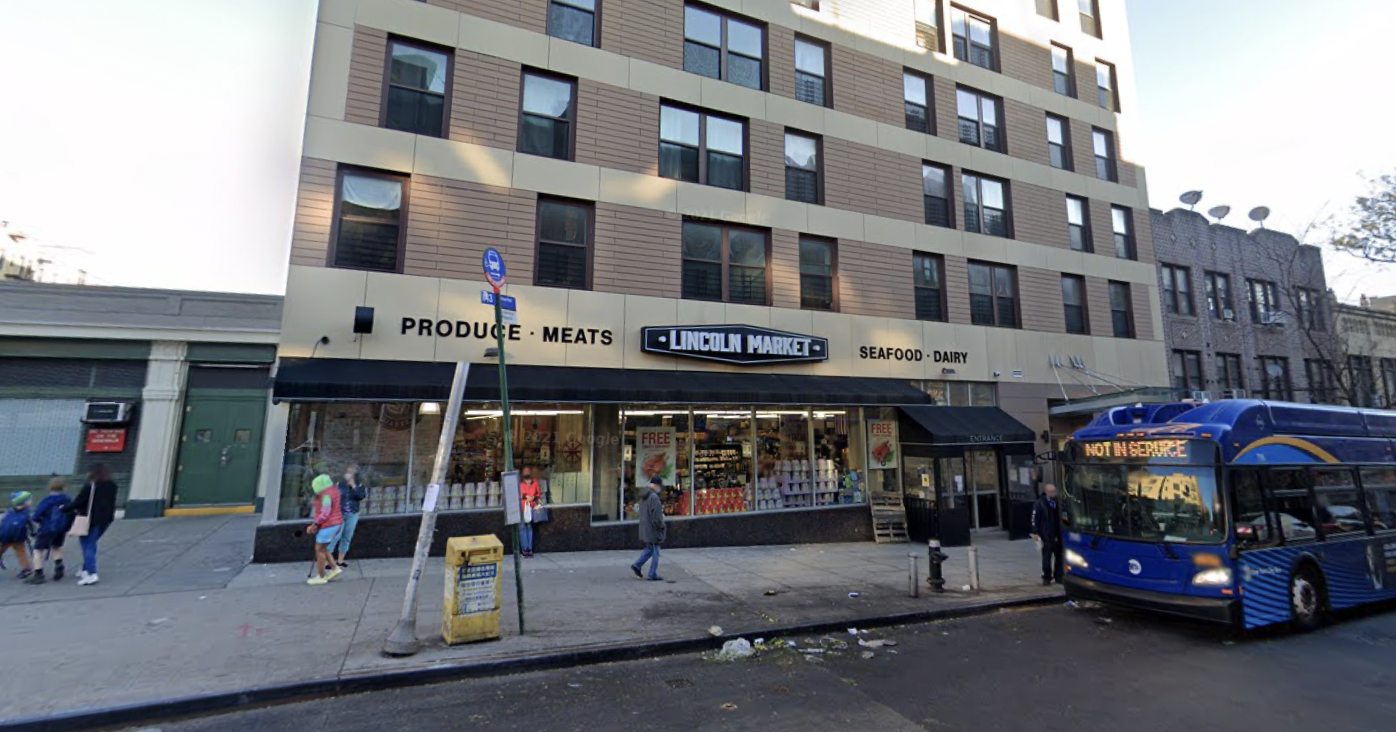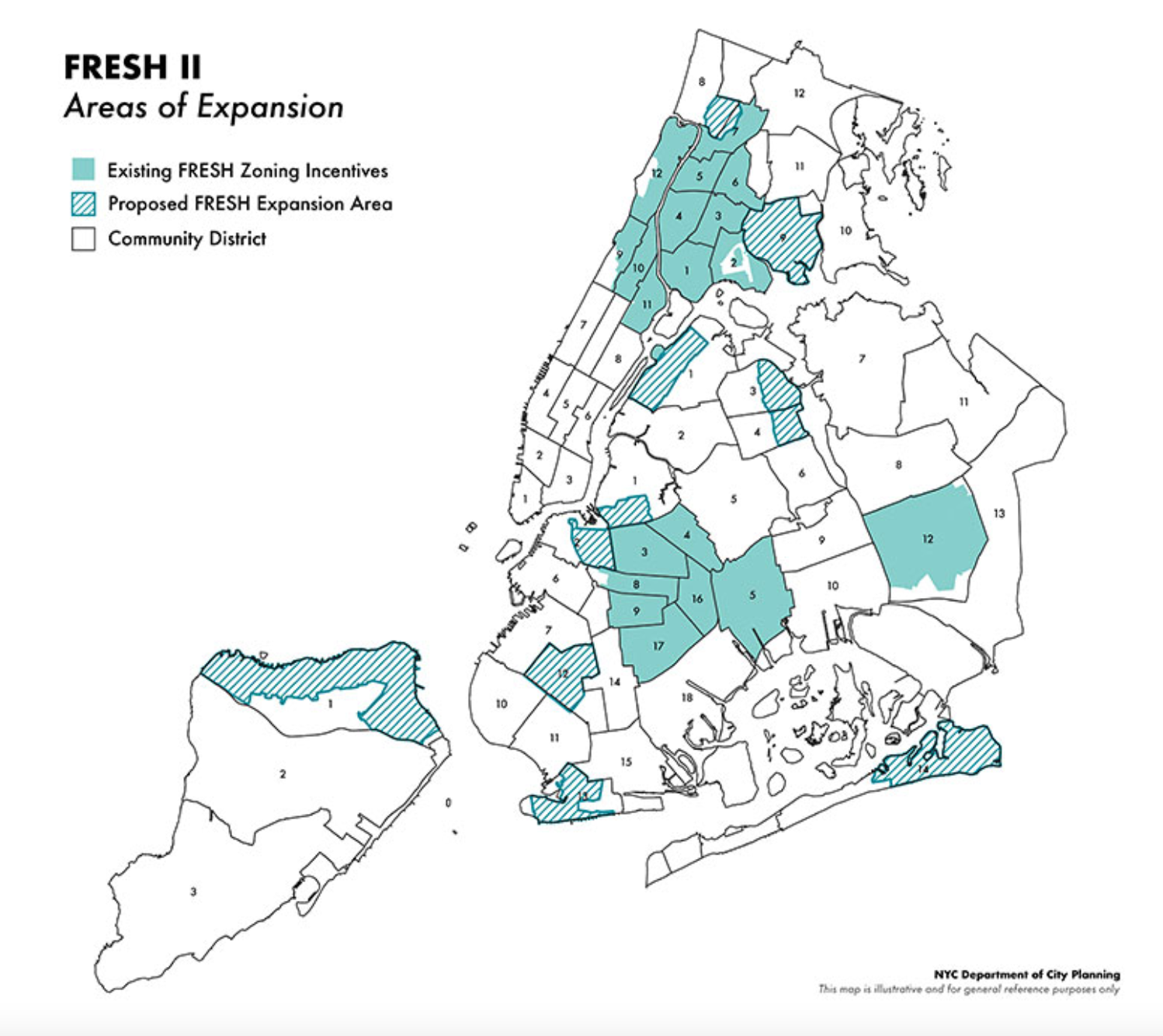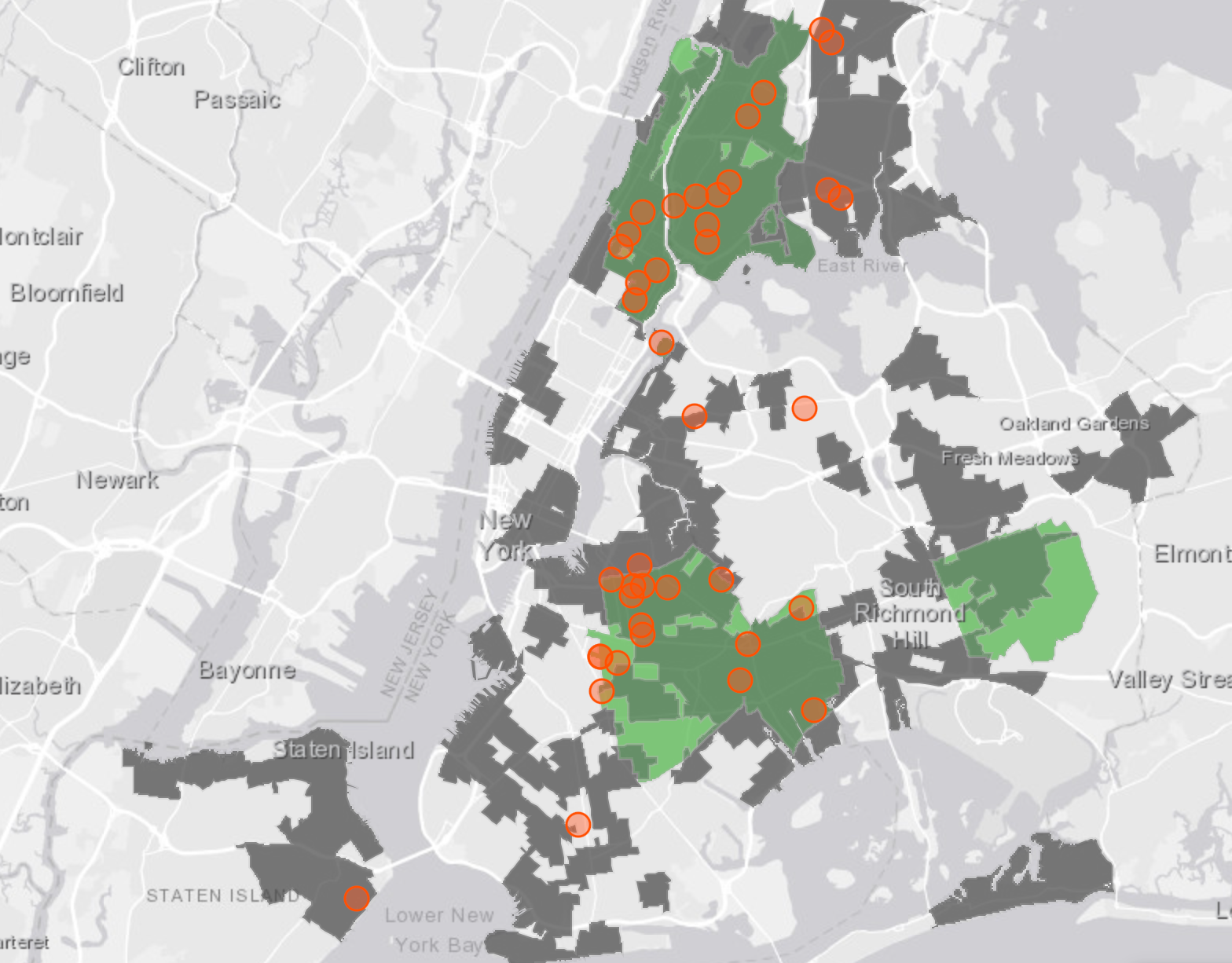City Proposes Expanding Supermarket Zoning Incentive to More Neighborhoods, And It’s About More Than Just Fresh Food


Public review has begun on a proposal to expand the number of neighborhoods where developers can build bigger in exchange for providing ground-floor space for a supermarket.
The Food Retail Expansion to Support Health (FRESH) program was first created in 2009, as an attempt to bring more grocery stores to underserved areas and reduce health inequities. The program currently covers a swath of city neighborhoods that includes much of central and eastern Brooklyn. A new map would expand the program to 11 additional neighborhoods across the city, including parts of South Williamsburg, Fort Greene, Borough Park and Coney Island in Brooklyn.
The proposal was first announced by Mayor Bill de Blasio in March, but formally entered the public review process Wednesday. And it comes at a time when supermarket redevelopments are top of mind in neighborhoods across Brooklyn: in Crown Heights, an escalating battle over the future of an Associated Supermarket has devolved into a legal battle, while a controversial plan to redevelop a Key Food in Ditmas Park prompted dueling protests.

“We’re New Yorkers; we love good, healthy, fresh food, and no New Yorker should have difficulty finding fresh food for themselves and their families,” City Planning Commission Chair Marisa Lago said in a statement yesterday. “By expanding and improving FRESH, we make it even easier to build and keep green grocery stores in areas where low-income families live – improving their health and everyday lives.”
The zoning incentive gives property owners the right to construct an additional square foot of residential floor area in a mixed-use building for every square foot provided for a FRESH-certified grocery, up to a maximum of 20,000 square feet. It also allows grocery stores to be built as-of-right in light manufacturing districts.
The proposed expansion map grew out of a 2018 DCP analysis that found many neighborhoods remain underserved by high-quality grocery stores. In 2019, the agency launched a Supermarket Needs Index that mapped existing grocery stores across the city and identified neighborhoods with additional need.
The Department of City Planning (DCP) says 27 projects have been approved for FRESH zoning incentives since the program was launched over a decade ago, of which eight were occupied as of February 2021.
A related program overseen by the city’s Economic Development Corporation (EDC) also offers a swath of tax breaks for supermarket operators and developers, and covers a broader area than the zoning program. EDC says 22 projects have been approved for the tax benefits, 18 of which have completed construction and are open to the public. The agency estimates those projects will receive $50 million in incentives and generate $156 million in city tax revenue.
The EDC tax program would not be changed under DCP’s proposed changes to the zoning program.

Some policy experts have raised questions about whether the FRESH program is an effective way for the city to address issues of food inequity; a 2018 analysis by the CUNY Urban Food Policy Institute found that many diet-related health indicators had barely budged since the program started, and racial disparities in fruit and vegetable consumption persisted or even worsened in that time.
“Adding supermarket capacity to an underserved neighborhood does not, in itself, appreciably alter shopping, buying, and eating behaviors, and thus has little measurable effect on diets, nutrition, and health,” wrote Nevin Cohen, the Institute’s Research Director. “Residents may appreciate having new or renovated supermarkets in their neighborhoods, but there is little evidence of significantly changed shopping behavior or nutritional health.”
Cohen’s brief recommended several changes to the program, including prioritizing community-based planning strategies over broad, area-wide designations; focusing on the availability of healthy foods rather than supermarket square footage; and supporting healthy food purveyors other than traditional grocery stores, like farmers markets and ethnic grocery stores.
The city’s new zoning proposal does take steps to incorporate some of those suggestions: in addition to expanding the number of eligible neighborhoods, the update would also add rules to prevent clustering of supermarkets, so they are more evenly spread throughout neighborhoods; remove a requirement that renovated buildings in the program must replace existing walls with windows; and provide a waiver for parking requirements in some districts.
Those changes indicate the city may be “trying to better recognize heterogeneity of neighborhoods,” Beth Weitzman, a professor of Public Health & Policy at NYU, told Bklyner. But she also called the program a “blunt tool” that may serve to advance economic development goals than food policy ones.
“I don’t expect something that has a soda aisle and a chips aisle to change the way people eat, even though it is now offering fresh and frozen produce,” Weitzman said.
“Even though they keep talking about food access, we know this isn’t the whole story,” she continued. “We know there’s more to it than that. It’s hard for a neighborhood to be seen as complete without a supermarket. Real estate interests like this because it increases the value of real estate. Residents like it because it brings an amenity to their neighborhood. It’s something that’s easy to move forward on.”
Indeed, EDC’s website boasts several economic benefits of the tax program beyond food access: the agency says supermarkets receiving tax benefits represent “over 700 thousand square feet of new or renovated space, creating over 1,000 new jobs, retaining more than 600 jobs, and an investment of $100 million into New York City’s economy.”
For his part, Cohen told Bklyner the FRESH zoning expansion is “really valuable, but it’s a limited step toward addressing food insecurity, which has more to do with poverty than with physical access.” He pointed to other recent city and state measures, including enabling people who receive SNAP benefits to purchase groceries online and increasing the minimum wage as “upstream” initiatives to improve food security.
The proposal also comes in a period of great uncertainty about how New Yorkers’ food consumption habits will evolve after the COVID-19 pandemic. The supermarket business boomed during the pandemic as more people cooked and ate at home, though there’s some indication that boom is already subsiding.
“We don’t know how people’s patterns of travel through the city may change as a result of COVID,” Cohen said. “We don’t know if people will revert back to eating out at pre-pandemic levels.”
Nevertheless, the zoning expansion proposal has the support of several key Council Members, including Speaker Corey Johnson and Council Member Rafael Salamanca, Chair of the Council’s land use committee. Council Member Mark Treyger, whose district includes a swath of Coney Island that would be added to the program, also expressed support.
“I’m very pleased with the FRESH initiative expansion into southern Brooklyn to cut red tape and break down any barriers in terms of zoning,” Treyger told Bklyner. “I think this is a good step. We have more work to do, but I’m very pleased with this announcement.”
The FRESH expansion comes amidst a broader push within the city to think more strategically about food access. Earlier this year, the city released its first-ever “10-year food plan,” which is intended to tackle hunger, food waste, nutrition issues, and instability in the food industry through a variety of food policy proposals. And smaller initiatives have sprouted up around the city, like a $4.6 million investment by Treyger to build a new greenhouse and urban farm at a Coney Island high school.
“There’s been more activity in the food space, thinking more about the quality of school food and worrying about food access, increasing emphasis on interrelated food system issues,” Weitzman said. “I think that recognition and commitment to food policy is going to continue and FRESH fits within that.”





